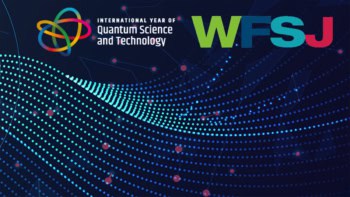“The question of whether paranormal phenomena actually exist probably divides educated members of modern Western civilization as sharply as any other single issue. If it is true that the human brain can receive messages and control things in ways that cannot be explained normally, then this undermines the belief of most scientists and runs contrary to the belief of most of us who actually investigate the brain.”
It was with these remarks that Horace Barlow, a physiologist from Cambridge University, opened a unique interdisciplinary conference in Cambridge last month. The meeting brought together some 50 scientists from a range of disciplines, including psychology, psychiatry and physics, to discuss “rational perspectives on the paranormal”.
Many of the delegates at the conference, including Barlow, are highly sceptical of the existence of paranormal phenomena. Claims of ghosts, alien abductions and spoon-bending are often based on dubious evidence, while attempts by parapsychologists to reproduce paranormal phenomena under controlled laboratory conditions are fraught with difficulty. Positive results are not unusual, but are rarely repeatable. Moreover, many seemingly weird phenomena have subsequently been explained by conventional science.
Most readers of Physics World will probably dismiss paranormal phenomena as either utter nonsense or not worthy of serious study, but over the years the subject has attracted the interest of a number of eminent physicists. Lord Rayleigh, J J Thomson and Oliver Lodge, for example, were all early members of the Society for Psychical Research, which was founded in 1882 by fellows of Trinity College to study “those faculties of Man, real or supposed, which appear to be inexplicable on any generally recognized hypothesis”.
According to Bernard Carr, who organized last month’s meeting and is a cosmologist at the University of London, paranormal phenomena fall into three main categories. First there are “pseudo-psychic phenomena”, which may in fact have a very simple physical explanation. Some kinds of poltergeist phenomena, for example, may fall into this category. “These phenomena are not really psychic, but are often misinterpreted as such,” Carr explains.
Second, there are phenomena – such as out-of-body and near-death experiences, hypnosis and apparitions – that may be entirely within the mind and do not necessarily involve any interaction with the physical world. “No doubt, people have these experiences,” says Carr, “but the question is how do we interpret them? Do they correspond to some form of higher-order reality, or are they just illusions? It would be easy to dismiss ghosts, for example, as no more than visual hallucinations, but sometimes apparitions are shared by more than one person or contain information about the real world, which makes them more interesting.”
The third type of paranormal phenomenon involves the direct interaction of the mind with the physical world, including telepathy, extrasensory perception and “psychokinesis”. One example of the latter effect was given at the meeting by Fotini Pallikari, a physicist from the University of Athens in Greece. She has analysed data from a group of German psychologists, who tried to see if people can influence supposedly random physical processes. The psychologists used electronic “noise” from a semiconductor diode, which consisted of a series of random positive and negative pulses that were digitized as 0 and 1. The signals were fed into a computer, and people were then asked to mentally “influence” the statistical distribution of millions of such bits.
Although conventional statistics found that the operators had no influence on the average, an alternative statistical approach, which looks for long-range correlations and periodicities in the time series, gave a different picture. It appeared to suggest that the mind could weakly sustain the “direction” of any naturally occurring localized deviations from chance, such as a run of ones and zeroes. In other words, the operator could affect the patterns by which the bits are arranged in time, even though their average value remained unchanged.
Brian Josephson, the Nobel-prize winning physicist from the Cavendish Laboratory, Cambridge, is attempting to elucidate the physical mechanisms behind such phenomena. These include the possibility that organisms can learn to bias the statistics through having a better understanding of its patterns than non-living matter, or that some “critical fluctuation” is involved.
The interaction between mind and matter in this way is one of the main reasons why physicists are interested in the paranormal. “Quantum mechanics, after all, is the first theory in physics in which the role of the observer has to be taken into account,” explains Carr. “You cannot separate the observer from the system being observed, although the precise role of consciousness in this process remains controversial.”
The mathematical physicist Roger Penrose, who was not at the meeting, has already tried to use quantum mechanics to explain the nature of consciousness in the normal mind, and some physicists believe that quantum mechanics only needs to be tweaked to incorporate paranormal effects. Henry Stapp from the Lawrence Berkeley Laboratory in the US, who has developed a quantum-mechanical theory of how the normal brain interacts with the mind, believes that his theory could be altered to accommodate certain paranormal effects, if they exist. “But such a tweaking greatly disrupts the logical and aesthetic unity of quantum theory, and I would be very reluctant to believe that any such thing actually occurs,” he says.
But Basil Hiley, a theoretical physicist from Birkbeck College, London, believes that conventional quantum mechanics will not be able to account for paranormal phenomena, if they exist. “Quantum processes provide a clue for understanding the mind, but we must go beyond that. We need an extended quantum physicalism,” he says.
Carr defends physicists who study paranormal phenomena, pointing out that much of “conventional” modern physics is itself highly speculative. “Some might say there is less evidence for superstrings than there is for ESP and at least we can try to replicate paranormal phenomena in the laboratory,” he says.
One problem for researchers with an interest in the paranormal is that the subject is not generally deemed to be academically respectable. That may change as related topics, such as consciousness, enter the mainstream, but for now many researchers study the paranormal as a “hobby” or as a sideline to their main research.
The final word goes to Barlow: “I do not believe the subject will make any progress unless we are sufficiently open-minded to accept the possibility of supernormal powers, and sufficiently critical to abandon claims shown to be false.”



